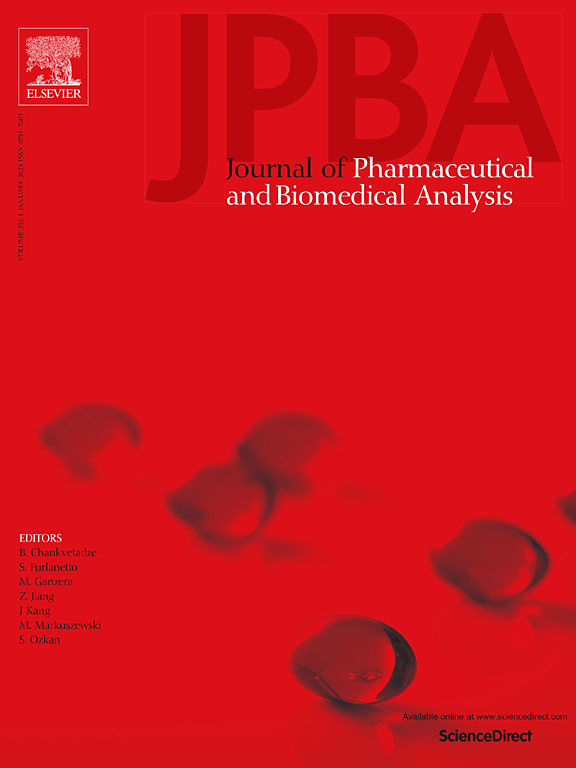UHPLC-MS/MS-based analysis of 17 nitazenes in human hair for practical forensic casework with simultaneous separation of 6 groups of isomers
IF 3.1
3区 医学
Q2 CHEMISTRY, ANALYTICAL
Journal of pharmaceutical and biomedical analysis
Pub Date : 2025-01-31
DOI:10.1016/j.jpba.2025.116707
引用次数: 0
Abstract
Nitazenes, a new class of potent synthetic opioids characterized by a 2-benzyl-benzimidazole structural core, have emerged on the illicit drug market following fentanyl. Compared to traditional opioids, nitazenes pose heightened risks of respiratory depression and central nervous system suppression. Due to the ease of modification of its parent nucleus, abusers and dealers can rapidly synthesize new structural analogs that fall outside the drug control catalog. Consequently, multiple isomers of nitazenes have emerged, causing significant interference in forensic practices. As an increasing number of poisoning and fatality cases were associated with nitazenes, there is an urgent need for developing an analytical method that can effectively address the challenges currently encountered in their identification in forensic practices. In this study, we established and validated a simple and high-efficiency ultra-high-performance liquid chromatography-tandem mass spectrometry (UHPLC-MS/MS) method for detecting 17 nitazenes in human hair. All analytes were separated in 6.5 min on a biphenyl column with simultaneous separation of six groups of isomers. Method validation demonstrated linear calibration over the range of 5–1000 pg/mg (r > 0.995), with limits of detection (LODs) ranging from 1 to 15 pg/mg and limits of quantification (LOQs) ranging from 5 to 20 pg/mg. The method also exhibited precision (<15 %) and accuracy ( ± 15 %), along with excellent recovery, acceptable matrix effects, and good stability at 4 ℃ for at least 72 h. When applied to authentic cases, this method successfully identified two positive hair samples and N,N-dimethylamino etonitazene was detected at concentrations of 1528.5 pg/mg and 463.9 pg/mg, respectively. This method provides technical support for the rapid and accurate detection of nitazenes, better meeting the needs of anti-drug operations and forensic practice.
求助全文
约1分钟内获得全文
求助全文
来源期刊
CiteScore
6.70
自引率
5.90%
发文量
588
审稿时长
37 days
期刊介绍:
This journal is an international medium directed towards the needs of academic, clinical, government and industrial analysis by publishing original research reports and critical reviews on pharmaceutical and biomedical analysis. It covers the interdisciplinary aspects of analysis in the pharmaceutical, biomedical and clinical sciences, including developments in analytical methodology, instrumentation, computation and interpretation. Submissions on novel applications focusing on drug purity and stability studies, pharmacokinetics, therapeutic monitoring, metabolic profiling; drug-related aspects of analytical biochemistry and forensic toxicology; quality assurance in the pharmaceutical industry are also welcome.
Studies from areas of well established and poorly selective methods, such as UV-VIS spectrophotometry (including derivative and multi-wavelength measurements), basic electroanalytical (potentiometric, polarographic and voltammetric) methods, fluorimetry, flow-injection analysis, etc. are accepted for publication in exceptional cases only, if a unique and substantial advantage over presently known systems is demonstrated. The same applies to the assay of simple drug formulations by any kind of methods and the determination of drugs in biological samples based merely on spiked samples. Drug purity/stability studies should contain information on the structure elucidation of the impurities/degradants.

 求助内容:
求助内容: 应助结果提醒方式:
应助结果提醒方式:


